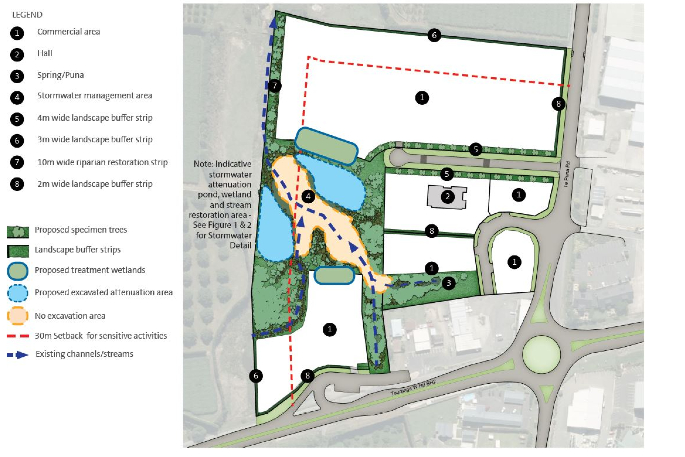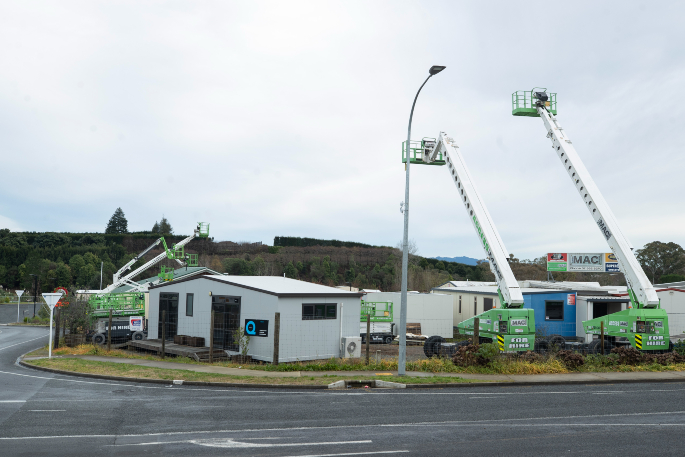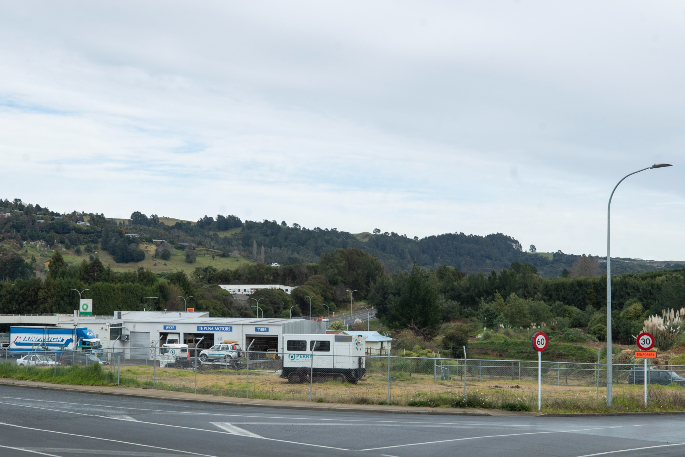Plans to develop land in Te Puna for commercial use could see 12 metre high buildings on the site – something locals aren't happy about.
Te Puna Springs Estate limited has applied to rezone the land they own that is bordered by Te Puna Road and State Highway 2.
A day-long hearing was held at Western Bay of Plenty District Council District Plan Committee meeting on Wednesday.
The applicant submitted an extensive range of evidence, the Bay Of Plenty Regional Council expressed their concerns and Te Puna residents had their say.
Plan Change 93, as the application is known, seeks to rezone 5.93 hectares of rural land to commercial and could see five commercial areas added to the site with permitted heights of 12 metres.
The Te Puna Memorial Hall Committee was opposed to the proposed height limit.
The hall is on a parcel of council owned land that is surrounded by the development site.
Committee member Jo Gravit said the 12m height does not fit with the image of a country town.
'We're proud of our village we're proud of our hall we built it purposely so that it did reflect a country hall image,” said Gravit.
She also said the hall wanted to invest in solar panels in future so planting and building heights needed to consider that.
 A structure plan for the new development. Photo: Supplied/ Boffa Miskell.
A structure plan for the new development. Photo: Supplied/ Boffa Miskell.
Doug Kirk owns Okaro orchard that borders the land, he was in support of the development provided effects on the orchard and his home were minimised.
'Although I'd much rather that plan change 93 did not proceed at all, I've tried to take a pragmatic approach to the proposal recognising that there is demand for development in Te Puna,” Kirk told the hearing panel.
His 5 hectare orchard produces gold kiwifruit for export.
Kirk enlisted the help of technical kiwifruit production expert Ethan England and planning consultant Simon Childs to produce a solution that would minimise the effect of the development.
'At present the measures proposed in plan change 93 to manage the interface between the orchard and the plan change are minimal and will be inadequate,” said Kirk.
He wanted amendments to the plan that minimised dust during development, reduced spray drift onto the rezoned site and planting that would not encourage the crop damaging pest, passion vine hopper.
He requested an appropriate barrier between his orchard and the area that included suitable planting that would be less likely to host passion vine hopper.
Kirk's planning consultant Simon Childs told the hearing a master planning process was required to 'properly and coherently” provide for Te Puna's growth over the long-term.
'In the absence of a master plan process piecemeal zoning proposals such as this one are likely to continue, potentially resulting in disjointed and poor quality planning outcomes,” said Childs.
He opposed the proposed 12 metre height limit and said it raised a question about whether the plan change appropriately responded to the existing character of the local area.
'In particular a 12 metre height limit will not maintain a small scale character and village feel amenity.” 'Potential big box retail would be enabled by the plan change but in my opinion this would not be a good fit for the site or surrounding area.”
Child said the plan change request did not provide a 'compelling rationale” for the increased building height.
 The site is currently utilised by the SuperMac Group who design and build prefabricated buildings. Photo: John Borren/SunLive.
The site is currently utilised by the SuperMac Group who design and build prefabricated buildings. Photo: John Borren/SunLive.
Community interest organisation Te Puna Heartland asked the planning committee for certainty around Te Puna's future through a strategic structure plan.
'All we want is some certainty among the members of the community that they will have a reasonable idea of what the Te Puna of the future is,” said Te Puna Heartland member Beth Bowden.
'They need to know how their place that they live in, love, work, play in is going to be.”
The organisation was also opposed to the height limit and wanted buildings to fit into the typography of the area like others do.
'In our admittedly rather shemozzly four corners area, it is noticeable that the built forms incorporate breaks in the building, verandas and are tucked into Te Puna's undulating typography to good effect.”
Bay of Plenty Regional Council was concerned about the footprint size of the commercial developments and the impact this would have on the stream that runs through the land as well stormwater management.
Regional council planner Nathan Te Pairi said there were 'land use conflicts” that needed to be resolved and council did not support the plan change in its current form.
'The primary reason for this is that applicant has not demonstrated that there is feasible and appropriate stormwater solution available for the site,” Te Pairi stated in his written evidence.
'I don't think its robust enough and I don't think it'll provide the level of certainty to actually protect the community and the environment,” he told the hearing panel.
Regional council wanted stormwater managed through the development of wetlands or rain gardens, rather than stormwater ponds.
Provisions suggested by the regional council included managing the water quality within the structure plan to 'avoid loss of values to the Oturu Creek”.
Constructing buildings with inert roofing material to prevent runoff from toxic metals such as zinc, creating a stormwater management plan that was certified by the district council prior to a discharge permit being obtained or subdivision of the site, were other provisions.
Initially the district council supported a 9-metre height limit, but senior consents planner Anna Price said after hearing evidence from the applicant's experts she agreed with the 12m limit.
'I've given consideration to the surrounding landscape, built form and the 14m height limit at the DMS post-harvest facility [opposite the site] and I would recommend accepting the 12m height limit,” she told the panel.
Because of the concerns around the height limit on Te Puna Road, Price recommended there be building setbacks from the road and a height limit set back to avoid creating a 'canyon effect”.
Price also supported a berm along the boundary of Kirk's orchard and planting that would assist in reducing the risk of passion vine hopper.
The applicant's lawyer Kate Barry-Piceno said they were gratified Price has considered the experts evidence on the height limit.
'The trend towards greater urbanisation and more efficiently using urban land to the best extent possible is consistent with a higher height,” said Barry-Piceno.
'The trend is that where you are going to urbanise land you do use it as efficiently as you possibly can.”
The district plan committee, chaired by deputy mayor John Scrimgeour, will notify the public of its decision once it has been made.
Public Interest Journalism funded through NZ On Air.




2 comments
Objections
Posted on 09-07-2022 08:15 | By peanuts9
Further proof the region has more than it's share of self-entitled NIMBYS.
That's right, ruin another area for money and greed
Posted on 09-07-2022 19:35 | By Get our roads
How many more areas of Tga do Councils have to destroy for money and greed. Te Puna traffic is already maxed out with the infrastructure in place, yet want to jam more traffic into an already congested state highway. There are enough problems now with traffic and congestion without making it worse and I dont expect the proposed new motorway to be finished in 5 years time so adding to the dismal roading we already have would be another decision that the WBOP will no doubt make to please their rich developer mates. The argument that the developers see a commercial need in the area is backed up by what data collected and from who? What is their extensive range of evidence? What locals are screaming out for commercial development and what kind of development, wher
Leave a Comment
You must be logged in to make a comment.